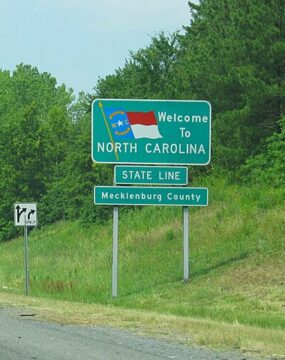Keep up with our latest demographic insights

In recent weeks, we’ve received many data requests from journalists and community leaders across North Carolina about the state's foreign-born population. This heightened interest is largely driven by concerns about how the new presidential administration’s policies may affect North Carolina. In this blog, we provide a demographic overview of the state’s foreign-born population. How many foreign-born residents live in North Carolina? Since 1990, the foreign-born population has grown by 763 percent. According to the 2023…
After the Great Recession, the volume of Mexican immigration to the United States—and North Carolina—dropped sharply. Between 2009 and 2014, the Pew Hispanic Center found that more Mexican immigrants had returned to Mexico than immigrated to the U.S., with an estimated net migration of -140,000 individuals. During this same time period, Asian countries, such as China and India, emerged as leading senders of immigrants. Similar trends were documented in North Carolina. New data from the…
North Carolina’s foreign-born population has grown by more than 800% over the past 35 years. In 1980, fewer than 80,000 North Carolina residents had been born in another country to non-citizen parents. By the 2012-2014 time period, more than 750,000 North Carolina residents were foreign-born. Most of this growth was driven by the increases in the populations born in Latin America (Central and South America) and Asia. This post focuses on trends in the foreign-born…
Monday, September 15th, through Wednesday, October 15th, marks National Hispanic Heritage Month. North Carolina’s Hispanic population grew from fewer than 77,000 residents in 1990 to nearly 867,000 in 2013. Between 1990 and 2010, the majority of population growth was due to net migration. As a consequence, the most common birthplace for North Carolina Hispanics was Mexico. In 2000, nearly half (47.4%) of North Carolina’s Hispanic residents were Mexican-born. As the Hispanic population settled in the state,…
"Young adults today, often called the millennial generation, are more likely to be foreign born and speak a language other than English at home, compared with young adults in 1980." - U.S. Census Bureau press release The U.S. Census Bureau released the most recent 5-year American Community Survey data last week, covering 2009-2013. In conjunction with this, they also released a new edition of Census Explorer, a collaborative effort with Social Explorer to produce interactive…
“When someone says the word “immigrant,” many people likely picture Europeans moving through Ellis Island during the late 1800s and early 1900s. Others think of a more recent time — especially after 1980 — when most immigrants arrived from countries in Latin America, such as Mexico, and, to a lesser extent, Asia. However, it may be surprising to learn that recent data show that the African foreign-born population is one of the fastest growing…
“English-speaking ability is an important topic surrounding immigration in the United States. For the foreign born, fluency in English is associated with greater earnings and occupational mobility. Conversely, the presence of many people with limited English ability requires state and local governments to make costly adjustments, such as providing English as a Second Language classes in schools and translating official forms into multiple languages.” - Christine Gambino, Yesenia Acosta, and Elizabeth Grieco, “English-Speaking Ability of…
North Carolina was largely untouched by the first two waves of immigration to the United States. Between 1840 and 1889, the U.S. received 14.3 million immigrants, the majority from Northern/Western European countries such as Germany, Ireland, and the United Kingdom. Between 1890 and 1919, another 18.2 million arrived, mainly from Southern/Eastern European countries such as Italy, Russia, and Poland. Yet, in 1920, fewer than 10,000 of the nation’s 14.2 million immigrants lived in North Carolina.…
I’ve heard someone joke that, prior to 1980, there were two languages spoken in North Carolina: English and bad English. This probably runs fairly true to most people’s day-to-day experiences before the more recent wave of immigration. In 1980, just over 2% of North Carolina residents age 5 and older, or 130,640 individuals, spoke a language other than English at home. Today, nearly 11% speak a language other than English at home, representing nearly a…
Your support is critical to our mission of measuring, understanding, and predicting population change and its impact. Donate to Carolina Demography today.